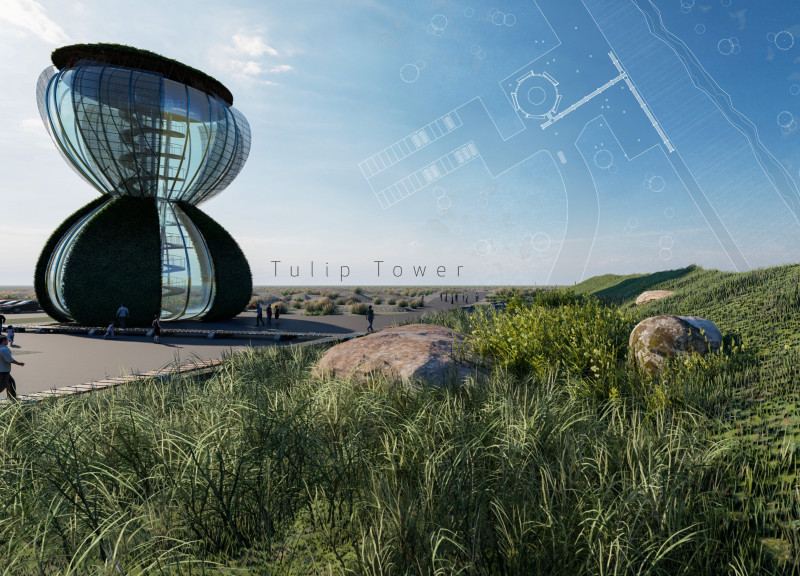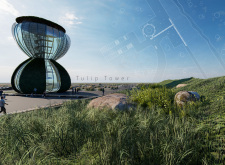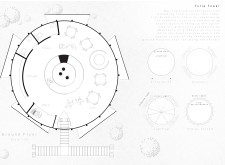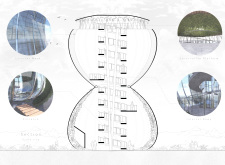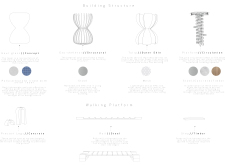5 key facts about this project
The architectural design focuses on creating an immersive experience as visitors ascend through the building. The central staircase features a spiral ramp that offers uninterrupted views of the greenery integrated into the core of the structure. This design encourages interaction with the space while promoting physical activity. The spiral form also supports a seamless flow of movement, accommodating both the visual and experiential aspects of the building.
Unique Design Approaches
A distinguishing feature of the Tulip Tower is its integration of nature within the structure. The careful placement of plants and greenery enhances environmental quality, contributing to biodiversity within an urban context. The use of polycarbonate sheeting for the exterior skin allows natural light to penetrate deeply into the interior spaces while offering energy efficiency through solar panels incorporated into the design. This choice of materials ensures the building operates sustainably while maintaining a connection to the natural environment.
Another notable aspect is the building's structural framework. The use of steel for the exo-skeleton provides a robust yet flexible support system, which is essential for tall structures in urban areas. The incorporation of large glazed areas allows for panoramic views, enhancing the user experience and promoting engagement with the surrounding landscape. The design also prioritizes user accessibility, ensuring that various needs are met through thoughtful spatial arrangement.
Functional Aspects of the Project
The Tulip Tower’s ground floor features essential amenities, such as a cafeteria, administrative offices, and clearly defined restroom facilities. Each of these areas is designed for both efficiency and user comfort, with natural light and open layouts creating inviting spaces. The materials chosen throughout the project, including concrete for structural supports and timber for flooring, reflect a balance of durability and aesthetic quality.
The overall design successfully aligns with contemporary architectural practices while addressing sustainability, user experience, and aesthetic appeal. The Tulip Tower stands as a modern architectural statement, encouraging exploration and interaction within an urban environment.
For further insights into the Tulip Tower, including architectural plans, sections, and design elements, readers are encouraged to explore the project presentation for a comprehensive understanding of its innovations and design narrative.


